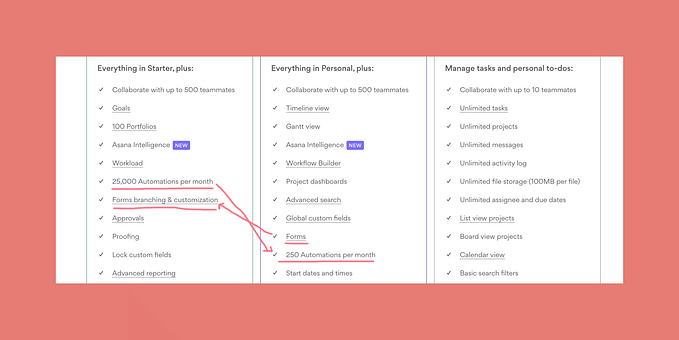You're reading for free via Tatiana Gutierrez's Friend Link. Become a member to access the best of Medium.
Member-only story
Every Website Needs A Clear Value Proposition
Why it matters and how to create one.
Reading is one of the most relevant skills our species has ever acquired. It’s learned throughout childhood, cultivated at school and, ultimately, it’s what allows us to continue learning and self-developing at our own pace.
We primarily tend to associate reading with books or any other printed media. It was the case until the Internet became mainstream and smartphones accessible to almost everyone. Blogs, digital news, infographics, articles, there are so many mediums now that we divide the time we used to dedicate to a single book across many smaller pieces of information.
One of the main concerns with the use of technology is the shrinkage in our attention span. We’re all experiencing in ourselves how it gets harder now to sit still and read uninterruptedly.
I’ve worked with businesses and marketing teams, and I find that many of them tend to think that visitors read every single paragraph added to a page, but this is far from reality. Sure, there’s a small percentage of your visitors that read thoroughly and engage with your content, but the majority of them don’t read on websites, they scan the pages, picking out individual words and sentences. This study was done by the NN group in 1997 and may seem outdated, yet 23 years later is more real than ever.
Part of this behaviour is due to the scroll functionality of apps and websites. The News Feed presents us with so much diverse content that we scan while scrolling down and pause only on the sections that grab our attention. When we land on a page, within the first ten seconds, we address if the content is relevant or we go back to where we left off. Even many articles are adding the read time at the top, and sometimes we can find ourselves thinking if this 15-min paper that looks interesting is worth our time now or maybe later.
The fact that people may be reading less doesn’t mean that all content should be shorter, but it’s our job to ensure that every heading and paragraph is engaging and speak to your customers’ emotions and pain points.
What’s a value proposition?
When you’re asked in a job interview: Why should we hire you for this position? You know that many other qualified professionals are applying for the same role, yet this is a crucial moment for you to explain that your experience and your personality are the best fit for what they are looking for, the company and its culture. It is not an impromptu question; as a professional, you should be able to clearly and briefly explain what you offer to a company in exchange for what they undertake: hire you. The same happens with a brand’s value proposition.
In marketing, one of the first recommendations for website optimisation is that it should have a visible value proposition. In simple words, it is a direct succinct statement that appeals to the primary emotional reason your customers landed on your website and helps them understand what you offer in less than 15 seconds. After your visitors read it, they should understand:
- What product are you selling?
- Which core problem do you solve for them or what’s in it for them?
- Why should they buy from you instead of your competitors?
A few examples of well-thought value propositions:
Monday.com

Grammarly

Mailchimp

Personal Capital

These are four different types of business and, even if you’re not their target audience, you can easily understand what they offer and see how they invite you to take action now. It’s easier to remember what they do. Regardless of your product’s complexity, the value proposition is a short, compelling promise of value with a few bullet points or a 2-sentence paragraph that name the benefits accompanied by an image that reinforces the message and makes your visitors want to read more.
Where to make it visible?
It should go at the top of your website’s homepage at all times as it ensures it’s visible for most of the traffic. However, it can have a more significant impact on your new visitors; therefore, it should be across your top landing pages where you get new traffic regularly. Google Analytics can provide this information.
How to write a value proposition?
This task requires deliberate thought, but there are many formulas to help you create a good one. I particularly like this value proposition canvas proposed by Momoko Price that enables you to identify and evaluate your customers’ pain points; the two formulas focus on either achieving an outcome or eliminating a problem.
Copywriters can do an excellent job at enhancing your proposition in creative ways, but the uniqueness of your business is crucial to sound different from your competitors. These are some of the questions you can ask yourself or find through your customer feedback or product reviews:
- Is your price lower?
- Do you offer a free trial, a free consultation or free installation?
- Does it have an extra feature?
- Is your product sustainable, organic, with better materials or ingredients?
- Does your product solve other secondary needs?
- Is it a niche product?
- Is it customisable?
- Do you offer free/fast shipping?
- Do you have a return policy or money-back guarantee?
- Do you provide exceptional customer support?
- Can your customers cancel anytime?
Answering these questions will help you identify your strengths along with your customer's pain points to work on the value proposition canvas. I also wrote this article to identify your customers’ emotional resonance and this other one about how emotions affect our decision-making process to connect those pain points with emotions and craft a sharp message. As with every marketing initiative, the recommendation is to test it to and measure what best resonates with your audience.
As best described by Peep Laja in this article: The key thing to remember is that you don’t need to be unique in the whole world, just in the customer’s mind. The closing of a sale takes place in a customer’s mind, not out in the marketplace among the competition.








